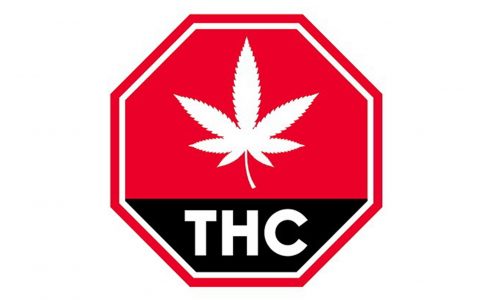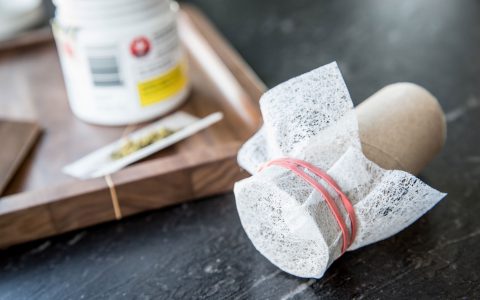You may not know this, but Canada has the 11th highest ecological footprint in the world, even though it ranks 37th in terms of population.
Many Canadians seem to be concerned about the environmental issues we’re facing, but there still seems to be a lack of understanding of how to make things better in the long run. For example, the cannabis industry and the packaging regulations established since legalization have been nothing short of excessive.
For everyday consumers accustomed to black market “dime bags”, the newly regulated containers and boxes can seem especially wasteful.
Cannabis Packaging Regulated by Health Canada
If you’ve watched any of the unboxing videos posted online, the first critique from legal cannabis consumers is often frustration over the multi-layered packaging.
Cannabis shops; stop selling weed with so much wasteful packaging. Plastic, a box, and then a bulky plastic jar is ridiculous for a single gram. It’s dry as fuck already so don’t use the plastic as an excuse to preserve “freshness”
— Pipikwâniskwêw (@Pipikwan_iskwew) March 21, 2019
Retailers and producers aren’t to blame though.
Stringently labeled, child-proof packaging is mandated to assist in the government’s goal to deter making cannabis accessible to young people—excess packaging is one unfortunate side effect.
Health Canada’s packaging requirements, stipulate that all packaging must have a child-resistant top; display the red THC symbol and yellow health warning; is tamper-evident, can prevent contamination, keeps cannabis dry, is designed to contrast with the colours of the standardized cannabis symbol, and be in a plain solid uniform colour.
Health Canada, for its part, is taking steps to address packaging sizes. Buried deep inside their plans to regulate edibles and extracts is a proposal that would allow licensed producers to use expanded panels on labels, such as peel-back and accordion panels, to display mandatory information while simultaneously allowing for packages to shrink in size.
“As you can appreciate and understand, cannabis companies in the space have had to move incredibly fast to get on the market,” Deepak Anand, CEO and Co-Founder Materia Ventures, who notes that the perfect supply chain process can usually take years to figure out. Anand believes that packaging falls under the umbrella of corporate social responsibility, and agrees it is an important conversation to be having, but explains “I just think that the industry is moving at a lightning pace and while some companies may be thinking of some of these things, I don’t think it’s very high on the priority list at this point.”
Despite the potential for improvement, many licensed producers find themselves with hands-tied due to the current regulations set out by Health Canada and the fact that many plastics are not biodegradable.
Packaging Concerns Piling Up
While emissions, light, and odour are among the known environmental impacts of cannabis cultivation, only now are concerns about the environmental impacts of cannabis packaging starting to surface.
In August 2018, The Washington Post reported that plastic “doob tubes” and small Mylar bags used to package pot were filling gutters, landfills and bobbing in waterways.
It’s important to start thinking about how we can change the impact that legal cannabis makes on our planet.
John Coyne, the executive board chair of Canadian Stewardship Services Alliance (CSSA) wrote in the Globe and Mail that each year, humans are responsible for eight million tonnes of plastic to enter the world’s oceans. The CSSA provides support to about 3,000 businesses and helps with recycling interests by creating convenient, clever, and environmentally sustainable ways for consumers to dispose of the packaging produced by businesses.
When reached by Leafly, David Lefebvre, Director, Public Affairs West, Canadian Stewardship Services Alliance (CSSA), shares that they offer businesses a wide range of resources, tools, and services to help them report and pay fees in their individual provinces with extended producer responsibility (EPR) regulations.
While Lefebvre was unclear if cannabis producers could participate in these programs, he did explain how extended producer responsibility places the financial and operational responsibility for material recovery on the businesses that sell products to consumers.
“The fees paid by the businesses are based on the amount and type of packaging and paper products they supply and are used to offset the costs of collecting, processing and marketing those materials in various provinces across the country.” Which means, programs are available. It’s on the LP’s to make thoughtful choices for the future.
Eco-Friendly Packaging on the Horizon
While Myrna Gillis, CEO of Aqualitas if Halifax, Nova Scotia, hasn’t officially started distributing cannabis, her company wants to create something as green and eco-friendly as possible.
Aqualitas’ all-natural production boasts a lower carbon footprint that won a Spark Innovation Award and the Clean Tech Energy Award. And, Gillis admits that packaging has been on her mind.
“In medical packaging and nutraceutical packaging, you’re not going to see that secondary packaging,” explaining that she understands why it’s a necessary evil but shares “the real issue, more than the packaging itself. It’s that we’re using more plastics then I think would be desirable.”
Right now, Gillis and her team are reviewing options which include a biodegradable packages for dry flower and different tin or metal options for their pre-rolls.
“We’ve [turned our] minds to what we can do better, while still staying within the regulations, […] Sustainable production is important to us, so obviously the packaging is a natural extension of that and we’re trying to do our best while finding something our consumer will find appealing and responsible.”
Recycling Programs Available at Select Retailers Now
Licensed producer Tweed, for one, has teamed up with recycling company TerraCycle to develop their very own free program to help consumers recycle their cannabis package in any Tweed or Tokyo Smoke location across Canada.
“For us, it was really the best way to make sure this packaging was being kept out of landfills and incinerators,” explains Courtney Langille, community engagement specialist with Tweed explains.
While in many Canadian cities, cannabis containers can be recyclable, in the city of Toronto, black plastics,—which some legal cannabis products are packaged in–are not accepted. When mentioned to Langille, she responds “This why we chose TerraCycle! They can accept any package and then they take these containers and recycle them into new products.”
Right now, Langille also explains that all Tweed and Tokyo Smoke stores accept all types of cannabis containers, not just their own. But if there is no brick-and-mortar near you, TerraCycle will send you a shipping label to mail your packaging in. “We’re always trying to be constantly innovative but also be as green as we can be. This cause lines up perfectly with our overall corporate vision.”
It would be great to see more licensed producer implement programs like these or to see the government offer some type of regulatory requirement for the industry.
Anand feels the challenge for Health Canada is they are just trying to balance out the different aspects of the industry while coming up with a regulatory system that make sense. “That’s what the challenge is. I think it is a varied environmental conversation, where some noise has been made by Canadian licensed producers… We need to keep this front and center of the mind.”
The industry might still be a long way from becoming sustainable, but we hope that things can slowly begin to change. With technologies and practices already being used elsewhere that could be applied to this industry, it is important to start thinking about how we can alter the impact that legal cannabis makes on our planet.















